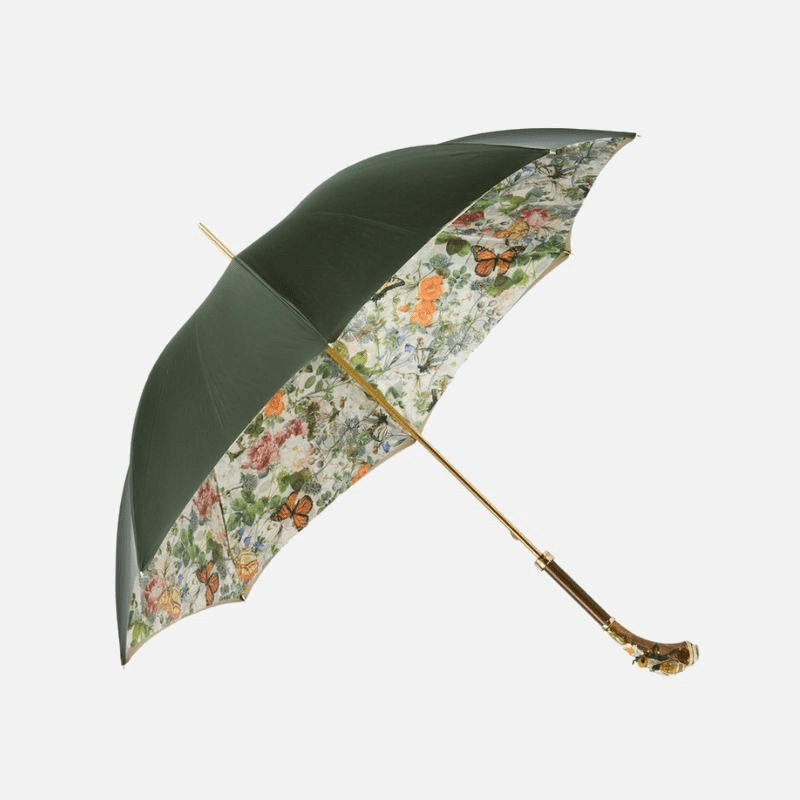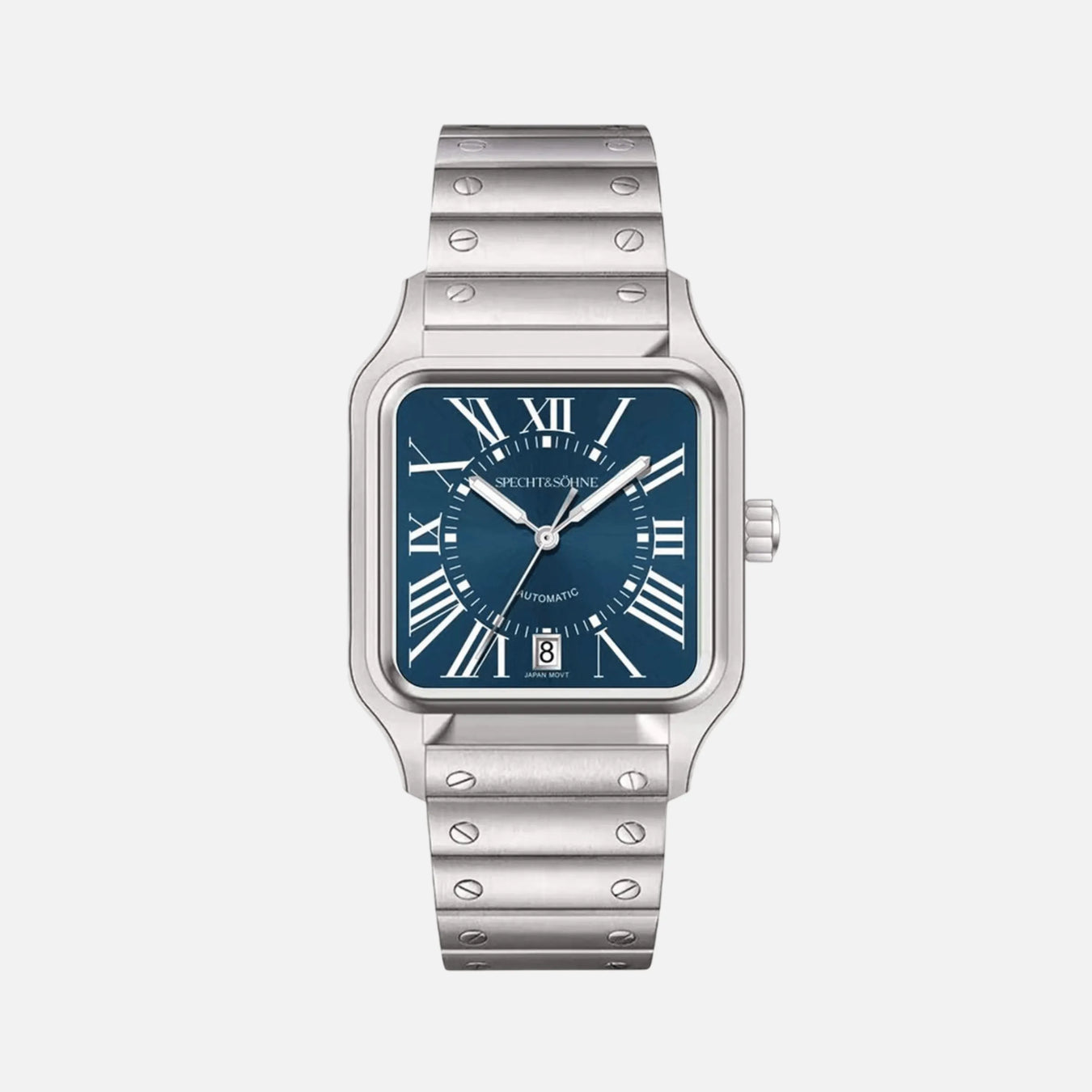
Chess for Kids: How the Game Enhances Creativity and Critical Thought
Introduction: The Timeless Game of Chess and Its Benefits for Children

Chess, a classic strategy game that dates back centuries, has transcended generations, reaching the minds of children around the globe. Envisioned initially as a form of entertainment for royalty, it has evolved into a cerebral sport celebrated for its intellectual benefits. Reminiscent of a battlefield, chess invites two opponents to engage in a silent war of wits governed by a set of wooden chess pieces, whose every move is laced with profound strategic implications. The game, reflective of real-life challenges, teaches children the art of critical thinking and problem-solving.
A refined set of large wooden chess pieces is not simply an array of functional tools to navigate through the game; it is an exquisite work of craftsmanship. Luxury chess pieces harbor a dual essence—as a calculating device and as an object of beauty. For a child, the allure of beautiful chess pieces may be the initial draw, but soon the depth and intricacy of the game captivates their growing minds. These tactile, finely carved figures serve as a bridge, connecting the abstract to the concrete, allowing young players to maneuver complex ideas with grace.
Introducing children to chess is more than presenting them with a recreational pastime. It’s an investment in their cognitive development, fostering skills such as foresight, patience, and creativity. Often recommended as a refined gift for dad, chess sets not only forge bonding moments between generations but also anchor the children in a tradition of intellectual enrichment. As such, chess emerges as not just a game, but a valuable educational tool, sculpting youthful intellects towards greater creative and critical capacities.
Decoding Chess: Understanding the Basics and Rules of the Game

Chess is not merely a game but a profound experience in strategic thinking, often referred to as the “game of kings.” At its core, it involves a battlefield where two players command an army of 32 pieces, striving for dominance through mental prowess. To ensure a rich and fulfilling encounter, one must comprehend the essentials of the game.
The Chessboard and Setup
Imagine a battlefield segmented into 64 squares of alternating colors, typically black and white. This is the chessboard, where the conflict unfolds. Each player commands a set of 16 pieces: one king, one queen, two rooks, two knights, two bishops, and eight pawns. The game commences with the pieces arrayed on the two ranks closest to the players, with pawns forming the front line and the more powerful pieces behind them.
Moving the Pieces
Every piece possesses unique movement capabilities:
- Pawns advance one square forward but capture diagonally.
- Rooks traverse the board horizontally or vertically.
- Knights move in an ‘L’ shape, leaping over other pieces.
- Bishops glide diagonally across the board.
- The Queen, the most versatile piece, combines the power of the rook and bishop, moving in any direction.
- The King moves one square in any direction, embodying the game’s objective: to trap the opposing king in a checkmate.
Objectives and Strategies
The ultimate goal in chess is to put the opponent’s king under direct threat of capture, from which there is no escape, known as a checkmate. To achieve this, players employ a blend of strategic and tactical skills, anticipating the opponent’s moves and devising a plan that involves the coordinated action of their pieces.
Special Rules
Several special rules add complexity and depth to the game:
- Castling: A move that involves the king and a rook, allowing players to protect their king and connect their rooks.
- En passant: A special pawn capture that can occur only when a pawn advances two squares from its starting position and lands beside an enemy pawn.
- Promotion: When a pawn reaches the opposing side of the board, it can be promoted to any other piece, often a queen, increasing its power and influence in the game.
Understanding these fundamentals is paramount for children embarking on their chess journey as they maneuver through the intricacies of this timeless game that enhances creativity and critical thought.
The Role of Creativity in Chess: Encouraging Innovative Thinking

Chess is not merely a game of strategic calculations and memorizations of openings; it is a canvas where creativity thrives. Encouraging children to delve into chess teaches them that, similar to a set of wooden chess pieces art 809125, each move can be a stroke of creative genius. When children are presented with a set of large wooden chess pieces, they are not only being prepared to engage in a match, but also being introduced to a world of endless imaginative possibilities.
Creativity in chess materializes when children are encouraged to see the board as a dynamic space where innovative thinking is rewarded. For instance, envisioning luxury chess pieces making unconventional moves can inspire children to take risks and experiment with novel strategies. By considering their beautiful chess pieces not just as tools, but as extensions of their creative expression, young players begin to explore a depth of the game that goes beyond the basics.
Encouraging Innovation:
- Problem-Solving Skills: Players often encounter scenarios where traditional tactics fail. Creativity is essential when devising unique solutions to these new challenges.
- Flexibility of Thought: Chess fosters the ability to think on one’s feet. A player might plan an elaborate strategy only to find that their opponent’s unforeseen moves require a swift and creative adjustment of their approach.
- Originality in Play: Each chess match is akin to a conversation filled with opportunities for original statements. Children learn that making an unexpected move can shift the balance of the game, much like how a unique gift for dad can transform an ordinary day into a memorable one.
- Visual Imagination: Visualizing potential moves in the mind’s eye, players create complex scenarios before they occur on the board, enhancing their capacity for imaginative thinking.
As children navigate through the labyrinth of chess, they unearth a realm where creativity intersects with logic. In this space, innovative thinking is not only encouraged but is a requisite for success. AssetImage(Carousel - a set of luxury chess pieces).
Strategic Thinking and Problem Solving: Chess as a Mental Exercise

Chess is a timeless mental exercise that transcends the mere entertainment value often ascribed to board games. It sharpens the brain, fostering strategic thinking and problem-solving skills that are invaluable in life’s myriad challenges. For children, engaging with a set of wooden chess pieces, artfully crafted and laid before them, is an exercise in patience, foresight, and critical analysis.
The game of chess demands a comprehensive understanding of the board and a keen sense of awareness of the opponent’s tactics. Within this framework, children learn to:
- Consider the consequences of their actions, as each move can lead to victory or defeat.
- Develop the ability to anticipate and plan several moves ahead, a skill akin to predicting potential scenarios and their outcomes.
- Recognize patterns and understand the importance of strategic positioning of the luxury chess pieces on the board.
Problem-solving in chess comes to play when children encounter a threat to their king or a complex position. They must:
- Evaluate the situation by assessing various responses and their implications.
- Execute a decision-making process that is both logical and creative, weighing immediate needs against long-term objectives.
Playing with beautiful chess pieces, whether a gift for dad or part of a school’s curriculum, allows children to engage with complex ideas in a tangible way. As they maneuver the large wooden chess pieces, they enact battles of wit and strategy that stretch their minds and imagination. Moreover, learning the art of chess can directly translate into better academic performance, as the skills honed on the chessboard parallel those needed for subjects such as mathematics and science.
Engaging with a set of wooden chess pieces is more than a pastime; it is a vital mental exercise that enhances a child’s ability to think strategically and solve problems effectively.
Chess and Child Development: Cognitive Benefits Beyond the Board

The strategic game of chess has long been identified as a catalyst for enhancing cognitive abilities in children. When young minds engage in the intricate dance of pawns, knights, and queens on a board that might resemble a set of wooden chess pieces art 809125, they embark on a journey of acute mental development. The benefits procured from this ancient game are far-reaching, extending well beyond the limits of the 64 squares.
Chess compels children to exercise a multitude of cognitive skills simultaneously. They learn to:
- Analyze complex positions and possible sequences of moves, boosting their analytical thinking.
- Plan ahead by foreseeing and averting potential threats, thus honing strategic planning competencies.
- Make decisions under pressure, which improves critical decision-making and teaches them the value of deliberation.
- Solve problems creatively as they navigate ever-changing game scenarios, thereby promoting inventive and divergent thinking.
Moreover, the game’s requirement for sustained attention and memory recall to remember opponent’s strategies and moves is instrumental in enhancing memory capacities. A study published in the Journal of Educational Psychology suggests that chess play can foster better memory and organizational skills, which are transferrable to academic settings.
Embracing chess as a pedagogic tool, be it through a set of large wooden chess pieces, luxury chess pieces, or beautiful chess pieces that could be a gift for dad, facilitates children’s access to a fun environment where intellectual virtues are cultivated. The confidence gained through chess invariably spills over to their approach to challenges, imbuing them with the resilience and problem-solving acumen necessary to navigate life’s complexities.
In essence, the cognitive benefits of playing chess are multi-dimensional, laying a foundation for children to develop into well-rounded individuals with the capacity to think critically, tackle problems innovatively, and approach the world with a strategic mindset.
Case Studies: Success Stories of Chess Enhancing Children’s Intelligence

Chess has long held a reputation for being a mental workout, and its impact on children’s intelligence is an area of particular interest in educational psychology. Here are a few compelling case studies that demonstrate how chess can bolster cognitive development in young minds.
In Sweden, a case study involving a group of students engaging with chess and traditional mathematical education showed learners who played chess improved not only in mathematics but also exhibited enhanced problem-solving skills. The chess-playing cohort outperformed their peers in both arithmetic and geometric tasks.
Another case study from Armenia, where chess is a mandatory part of the school curriculum, reported significant cognitive improvements among children. Observations highlighted sharpened memory, better organizational skills, and increased creativity.
In New York, The “Chess in the Schools” program, which introduced chess to inner-city children, showcased substantial improvements in the students’ reading and math scores. Teachers also noted marked growth in the children’s attention span and their ability to think critically.
In these studies, the correlation between regularly maneuvering beautiful chess pieces across the board and improved academic and critical thinking skills was evident. For instance, the intricate strategies associated with a set of large wooden chess pieces taught children to recognize patterns and think several moves ahead.
Even in casual settings, parents gifting their kids a set of wooden chess pieces art 809125 witnessed their child’s enhanced focus and strategic planning. This luxury chess piece set, often considered an ideal gift for dad, became an unexpected cognitive development tool for their children.
In summary, across various cultural and geographic contexts, chess has proved to be more than a game. It is a catalyst for intellectual enhancement, making it an invaluable addition to any child’s educational journey.
Critical Thought in Action: How Chess Cultivates Decision Making Skills

In the realm of chess, the battlefield hosts a set of wooden chess pieces, art 809125 in essence, which symbolize more than mere game tokens; they embody the very decisions a player makes. These beautiful chess pieces represent options, strategies, and potential outcomes that players must navigate to emerge victorious. Chess serves as a cognitive gymnasium where decision making is the heart of every move.
Critical thinking becomes not just an abstract skill but a tangible exercise when a player is confronted with a set of large wooden chess pieces, luxury chess pieces that they must maneuver strategically. Every choice on the chessboard comes with consequences, and young players learn to weigh these outcomes, a practice that sharpens decision-making skills. Through chess, children are taught the importance of:
- Analyzing the situation: Before making a move, players must assess the current state of the board, their opponent’s potential responses, and the long-term implications of their actions.
- Calculating risks: Chess encourages kids to evaluate the risk vs. reward aspect of their decisions, understanding that some gambles are necessary for greater advantage.
- Considering multiple perspectives: Just as a gift for dad might vary based on his interests, so must a player consider a variety of strategies and counterstrategies that their opponent might employ.
Chess transforms the abstract concept of critical thought into a hands-on experience whereby each move is a decision, and every game a lesson in choice and consequence. It is in this intricate dance of moves and countermoves that children develop a deeper understanding of the decision-making process, an invaluable skill that transcends the chequered board into real life.
Parental Guidance: How to Effectively Teach Chess to Kids
Teaching a child to play chess can be both a delightful and a daunting endeavor. To ensure that the learning experience is engaging and productive, parents can adopt several strategies to teach their children effectively. First, investing in a set of wooden chess pieces, art 809125, can provide a tactile and visual appeal that keeps kids interested. A well-crafted set of large wooden chess pieces not only enhances the look of the game but also makes it easier for small hands to maneuver the pieces.
Begin the chess journey by introducing the game as a story, with each piece having its own movements and importance, much like characters in a tale. Luxury chess pieces can add an aura of grandiosity to the story, making it more captivating for the child. Distinct and beautiful chess pieces can help kids better remember their roles and positions.
Here are some steps parents can take:
- Start Simple: Break down the game into easy-to-understand segments. Focus on the basics, such as the names of the pieces and how they move, before diving into more complex rules.
- Be Patient: Kids might take some time to remember how all the pieces move. Encourage questions and offer simple, clear explanations. Mistakes are part of learning.
- Make It Fun: Use games and puzzles to make learning enjoyable. If chess becomes a task, children may lose interest.
- Encourage Creative Thinking: Let them try out different strategies and moves to see the consequences. Chess enhances creativity by allowing freedom within a structured environment.
- Play Regularly: Consistency is key. Regular games hone skills and build confidence.
- Celebrate All Successes: Whether it’s capturing a piece or eventually winning a game, every achievement is an opportunity for positive reinforcement.
Remember that a gift for dad might also be a gift for the child; purchasing a high-quality chess set can be an investment in family time and the intellectual growth of a young mind. Parents’ enthusiasm and involvement are crucial in guiding their children through the artful and intellectual world of chess.
Curriculum Integration: The Place of Chess in Educational Settings
In integrating chess into school curricula, educators are discovering the multifaceted benefits this ancient game has to offer. While a set of wooden chess pieces art 809125 can simply be an engaging classroom tool, they can also represent an important educational asset that aids in the development of creativity and critical thinking.
In literacy, for instance, chess introduces an array of vocabulary and concepts that enhance language skills and comprehension. Describing the movements and strategies involved mirrors narrative thinking and storytelling. Mathematics finds its place on the chessboard through the logic and geometric patterns required for understanding chess positions and potential moves.
The beauty of chess lies in its adaptability to different age groups and learning stages. A set of large wooden chess pieces provides tactile stimulation for young learners, creating a direct connection between their actions and the game’s outcomes. This hands-on experience is vital for kinesthetic learners who thrive on engaging their senses.
In terms of critical thinking, chess is unparalleled. It encourages students to anticipate their opponent’s moves, think ahead, and evaluate the consequences of their actions. By pondering over luxury chess pieces, students practice patience and foresight, honing decision-making skills that are invaluable both within and beyond the classroom.
Moreover, including beautiful chess pieces as a gift for dad can span beyond educational settings, offering avenues for family bonding and intergenerational learning. Such interactive experiences promote social skills and cultural awareness as parents share their knowledge and strategies with children, turning each match into a lesson about respect, patience, and sportsmanship.
Through its incorporation into educational frameworks, chess proves to be more than just a game; it’s a teaching medium, nurturing analytical minds prepared for the complexities of the future.
Tools and Resources: Best Practices for Learning Chess at a Young Age
Introducing children to the game of chess can be an enriching experience, fostering creativity and honing critical thinking skills. To facilitate young learners in their chess journey, certain tools and best practices should be implemented to create an engaging and effective learning environment.
-
Start with the Right Equipment: Engage children with a set of large wooden chess pieces, which are easier for small hands to maneuver. A set of wooden chess pieces, art 809125, is not only aesthetically pleasing but also durable, making them ideal for young learners.
-
Online Platforms and Software: Utilize interactive online chess platforms that provide lessons tailored for kids. These platforms often include games that adapt to a child’s skill level, ensuring a continually challenging and fun experience.
-
Chess Puzzles and Workbooks: Integrate chess puzzles into the learning process. Workbooks designed for children support learning outside of play and help reinforce tactics and strategy.
-
Professional Coaching: Consider hiring a chess coach who specializes in teaching children. A good coach will provide personalized guidance, keeping the child’s interest and learning style in mind.
-
Chess Clubs and Camps: Encourage participation in local chess clubs or chess camps. These provide a social setting where kids can learn from peers and gain experience playing against a variety of opponents.
-
Tournaments: Once comfortable with basic gameplay, introduce children to tournaments. Beginning with small, local competitions can be a great way to ignite competitive spirit and motivation.
-
Gift a Beautiful Chess Set: To celebrate milestones in learning and to encourage the love of the game, gift a luxury chess set. Beautiful chess pieces can be a wonderful gift for dad and child to share a common interest and spend bonding time.
Remember, the key to teaching chess to kids is to maintain an element of fun while progressively challenging their abilities. Incorporating these resources will help young players develop a passion for the game that can last a lifetime.
Overcoming Challenges: Dealing with Loss and Learning from Mistakes in Chess
Chess, often portrayed as a battle of wits and strategy between two opponents, presents numerous challenges, especially for young players. Managing defeat and learning from blunders are vital components of a child’s development in the game. While the sting of loss can be disheartening, it provides a crucial opportunity for growth.
-
When a child faces defeat after a lengthy game, it is essential to guide them through processing the loss. Emphasizing that each game is a set of learning opportunities helps shift focus from the outcome to the learning process.
-
Reviewing games, particularly losses, can unravel where a strategy went awry or a specific move turned the tide. This retrospective analysis is where a set of large wooden chess pieces can become more than mere game components; they transform into tools for visual and tactile learning.
-
Errors, whether they are from a miscalculation or a lapse in concentration, are invaluable teaching moments. Demonstrating how a beautifully crafted luxury chess piece, whether it’s a queen or a pawn, played a pivotal role in a game can instill a memorable lesson in decision-making and consequences.
-
Gifts for dad often include items that serve as a bonding activity; a set of wooden chess pieces art 809125 can help foster a shared experience where parents can teach resilience and sportsmanship through personal example and narratives from their own chess games.
-
Celebrating small victories, even within a lost game, encourages a growth mindset. Identifying a clever move or an innovative strategy amidst errors underscores that progress often comes packaged with setbacks.
Chess is not merely a game but a simulation of life’s challenges. It teaches children to take responsibility for their actions, learn from their missteps, and emerge more knowledgeable and resilient with each game played. This foundation in chess can translate into a balanced approach towards life’s intricate puzzles, reinforcing creative thinking and critical analysis.
Measuring Progress: Evaluating the Impact of Chess on Children’s Creativity and Critical Thinking
Determining the influence of chess on the cognitive abilities of children involves a multi-faceted approach. Strategically, chess engages players in a complex decision-making process, offering a fertile ground for enhancing creativity and critical thinking.
Educators and psychologists commonly use qualitative assessments to gauge children’s progress in these areas. They observe behavioral changes during gameplay, such as the ability to anticipate opponents’ moves, which indicates improved foresight and strategic planning. Additionally, recorded interviews with the children can reveal their thought processes and how they tackle problem-solving scenarios during chess matches.
Quantitative measurements can also provide valuable data. Standardized tests designed to assess critical thinking and creative problem-solving abilities before and after consistent chess training can show concrete evidence of cognitive improvement. Such tests often delve into pattern recognition, memory retention, and abstract reasoning — skills that are all enhanced by playing chess.
Furthermore, a critical aspect of evaluating the impact of chess involves considering how children apply their newly acquired skills in other academic and social contexts. Teachers and parents may report increased performance in mathematics and science, subjects that closely align with the logical and analytical skills honed by chess. Enhancing creativity may be reflected in children’s ability to generate diverse solutions to open-ended problems or in their participation in creative arts.
To obtain a comprehensive understanding of progress, longitudinal studies that monitor children over extended periods can be particularly insightful. These studies track the sustained effect of chess on cognitive capacities and the growth of related skills beyond the game itself.
In summary, a combination of observational techniques, standardized testing, anecdotal evidence, and long-term tracking provides the most accurate measure of chess’s impact on nurturing creativity and the critical thinking of children. Regular chess practice, involving a beautiful set of large wooden chess pieces, can therefore be considered not only an educational tool but also a gift for the mind, aiding the intellectual development of young players.
Conclusion: Summarizing Chess as a Catalyst for Young Minds’ Development
The timeless allure of chess can be encapsulated by a set of wooden chess pieces, such as art 809125, which not only offers an aesthetic appeal but also stands as a symbolic representation of intellectual combat and strategic thinking. This game, particularly when presented through large wooden chess pieces, transforms into a captivating and tangible tool for enhancing creativity and critical thought in children.
The link between chess and cognitive growth is profound. It nurtures young minds by teaching them the art of decision-making and the consequences of their actions. By contemplating moves and countermoves, children learn to look ahead, evaluate multiple scenarios, and anticipate possible outcomes. This deliberate analysis sharpens their problem-solving skills.
Additionally, creativity receives a significant boost as children explore the manifold trajectories that each game session presents. Beautiful chess pieces double as objects of art that inspire imagination and artistic appreciation, combining aesthetics with intellect, which is a rare fusion in traditional educational tools.
For memory and concentration, the game is unparalleled. Memorizing various positions, strategies, and combinations in chess strengthens mnemonic capabilities, while paying attention to the opponent’s moves necessitates undivided focus.
Furthermore, the emotional intelligence of children is subtlely honed as they encounter situations that demand patience, resilience, and the graceful acceptance of both victory and defeat.
In the broader spectrum, a luxury chess set can even serve as an aspirational gift for dad, symbolizing an intergenerational bond and encouraging shared strategic learning experiences.
In essence, chess equips young minds with a versatile toolkit for intellectual and emotional development. Encouraging the game’s play is an investment into their ability to think, create, and navigate the complex landscapes of life with strategic elegance and creative flair.






